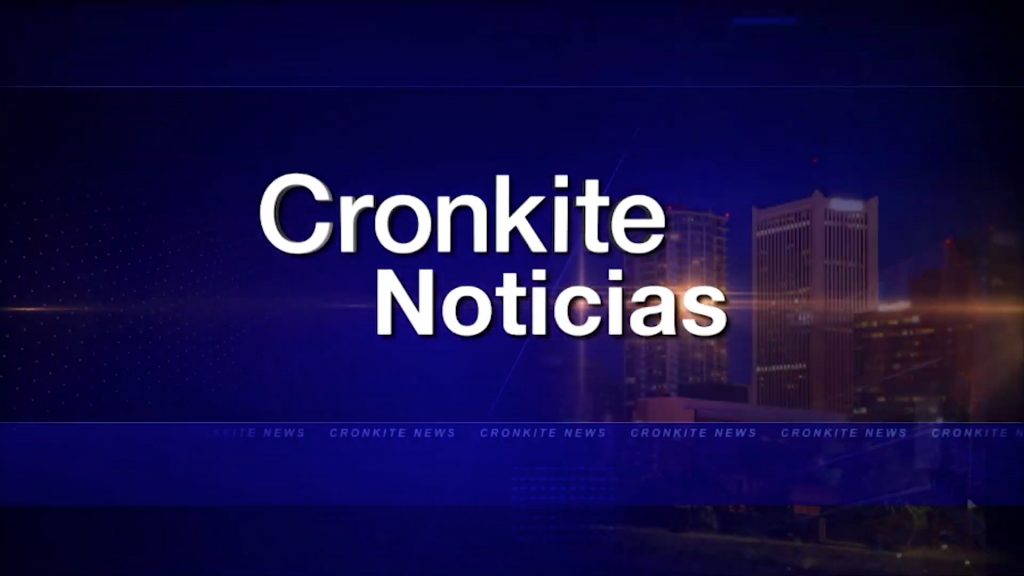
“English, or Spanish?” For newsrooms seeking to serve increasingly diverse audiences, the best answer might be: “Why not both?” A pair of experiments at the ASU Cronkite School of Journalism by the bilingual Cronkite Noticias reporting team tested a new way to deliver the news to these viewers. The results? ¡Muy buenos!
The idea to report bilingually emerged organically within the Noticias news team. “Our conversations happen organically in between both languages — English and Spanish,” explained Valeria Fernandez, Director of the Cronkite Noticias team. “The students ‘code switch’ (alternating between languages), and I code switch with them as their professor, so it felt like a natural evolution to attempt to do something that reflected their identities more.”
The ideal subject for the first storytelling experiment emerged organically. Cronkite Noticias reporter Karina Espinoza was preparing a report for Hispanic Heritage Month by profiling artists in the Phoenix area. As she was interviewing artists about how they expressed their heritage through their work, she found both that “Hispanic” encompassed many different countries of origin, and that several of her subjects’ primary language…was English. And at least one interviewee alternated between Spanish and English. After discussing how best to tell the story, the team decided the most accurate way was to preserve each subject’s natural language choice, and deliver a truly bilingual story, subtitling the Spanish responses for English-only viewers, and the English responses for Spanish-only viewers, while giving bilingual audiences an authentic and unfiltered story. For subtitling, the team used the same method used by many local broadcasters when they create text over video for ‘social videos.’
“This approach benefits three different audiences and brings them together,” noted Fernandez. “There is no ‘other.’ When we report for a particular audience we may report about the “other.” This approach offers new possibilities to experiment with inclusion, dialogue between cultures and understanding by finding common ground.”
Bilingual reporting isn’t just a more inclusive way to tell certain stories. Data from the U.S. Census Bureau shows that, in many states, it more accurately represents and serves an increasingly diverse population.
There are seven U.S. states where 30% or more of the households speak a language at home other than English, according to the census. That includes population centers like California, Texas, Florida and New York/New Jersey. There are twelve states where at least one in five households speak a second language at home. In the majority of those cases, that second language is Spanish.
US CENSUS CHART
The data is clear. While local news organizations have traditionally offered an either/or choice — English or Spanish — language is no longer a binary choice in many U.S. homes. Those traditional distinctions are blurred in families where parents may have only spoken Spanish but now their children primarily speak English outside of the household. For media companies, there’s an opportunity to better serve this multilingual household that is, in a number of states, a significant subset of the overall audience. It’s not only more inclusive. It’s also a good business strategy.
“A bilingual or multilingual person often acts as a bridge between people, and a sort of cultural broker,” noted Fernandez.
Buoyed by the positive response to their bilingual Hispanic Heritage Month report, the Cronkite Noticias team decided to take their weekly all-Spanish newscast for Facebook Live and instead deliver it bilingually. The three Noticias hosts interacted bilingually, and naturally, in both English and Spanish.
“From the minute we went on the air it was clear how comfortable the student journalists felt with communicating in two languages,” said Fernandez. “They started improvising, interacting with each other more than they’ve done in the past in Spanish and English.”
The real-time response from the live stream on Facebook was overwhelmingly positive.
“We got a lot of great responses from bilingual people in our social media channel who felt recognized,” said Fernandez.
The responses came bilingually as well, with viewers posting praise and appreciation in both Spanish and in English.

“That’s what we did in the show, we virtually invited segments of the audience to sit together at the same table,” said Fernandez. “So those who are bilingual see themselves represented in the show, and monolingual audiences are invited to step a little outside their comfort zone while being offered a window into a new language. Rather than being left out, they are invited into the conversation.”
In many newsrooms, there are now multiple reporters on staff who reflect this diversity and are bilingual. News leaders looking to better serve their increasingly diverse local audience might think about ways to invite the bilingual news viewer “into the conversation.”
